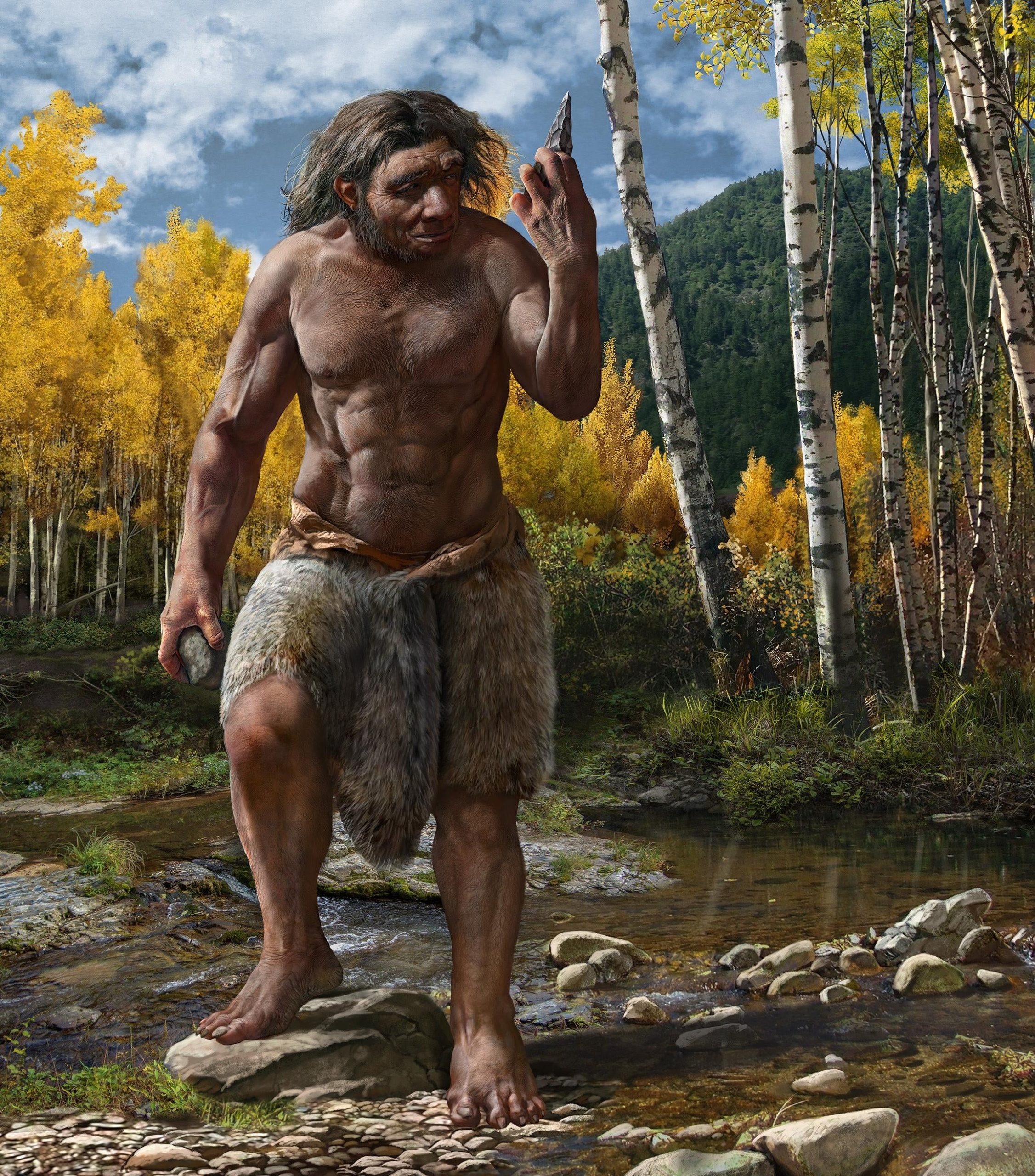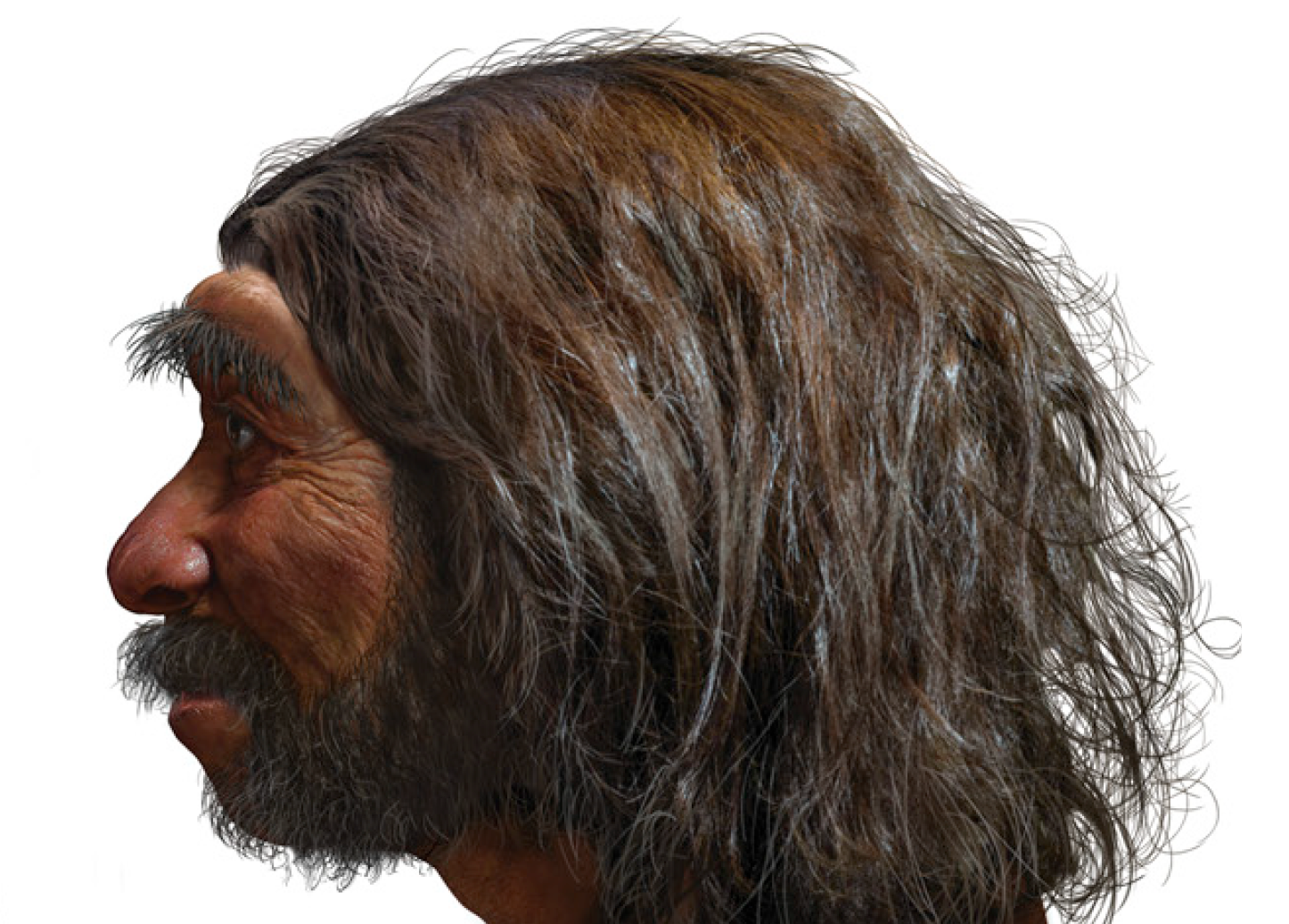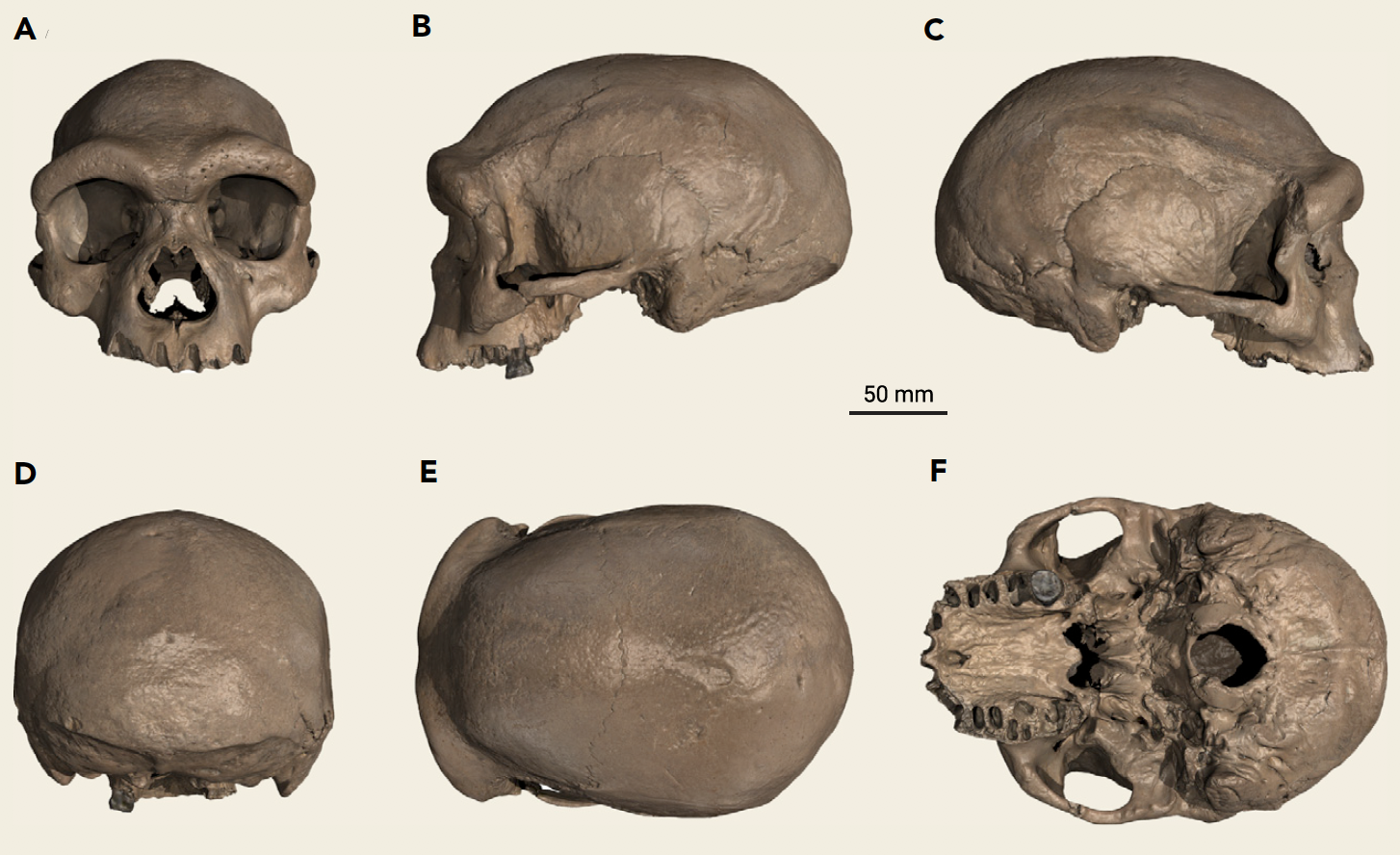A comprehensive analysis of an unusually large skull found in Harbin, China has led to the reported discovery of a previously unknown species of extinct human, dubbed “Dragon Man.” Dating back some 146,000 years, the skull is forcing a re-think of human evolution in Asia during the Middle Pleistocene, but uncertainties about the fossil’s exact age are casting doubt on the findings.
“Personally, I think the Harbin fossil is one of the most important finds so far for the last 500,000 years of human evolution,” Chris Stringer, an anthropologist at the Natural History Museum of London and a contributing member of the investigating team, said in an email.
Indeed, the discovery of Homo longi, or Dragon Man, suggests a third human lineage was present in Eurasia during the Late Middle Pleistocene, in addition to Homo sapiens and Neanderthals. The mysterious Denisovans were also around at this time, but they belong to the Neanderthal lineage. The finding suggests each of the three lineages experienced their own evolutionary journeys, and that Asia was an important region for human evolution, according to Stringer. Details of this discovery were published today in three related papers, all published in The Innovation, a peer-reviewed scientific journal from Cell Press.
The exquisitely preserved Harbin cranium is the largest human skull ever found, featuring an array of distinct features that set it apart from both modern humans and Neanderthals. According to the research, H. longi is more closely related to modern humans than to Neanderthals, which means it’s the true sister group to the Homo sapiens lineage, not Neanderthals.
Well, assuming this interpretation is correct. The findings are fascinating and clearly important, but the researchers have ventured into rocky territory, as the fossil was found outside of its original context, making it difficult to accurately source and date the specimen.
Skull in a well
The skull was found in Harbin City of China’s Heilongjiang province back in the 1930s, but because of the Second World War, the Chinese Communist Revolution, “and many other things” having to do with the object’s long and complicated history, the family who found the skull hid it in a well, where it languished for the past 85 years, according to Xijun Ni, a co-author on all three papers and a paleoanthropologist at the Chinese Academy of Sciences. The family, now three generations later, donated the skull to a public museum in 2018, making the cranium “known to the world,” and allowing scientists to finally study the remarkable specimen, as Ni explained.

After obtaining the skull, Qiang Ji, a professor of paleontology of Hebei GEO University, assembled a team to analyse it. Stringer was asked to participate, and the team spent the next 18 months working on descriptions, comparisons, analyses, and preparations of the three papers. Each paper focuses on a particular element of the research, specifically the dating of the specimen, the identification of a new species of Homo, and the updated evolutionary family tree, or phylogenetic analysis.
“I have long suspected that there was a distinct species of human in East Asia, and I was delighted to be invited to study this wonderfully preserved fossil that validated the idea,” said Stringer.
Dubious dating?
The first challenge was to date the fossil without a stratigraphic context. Ideally, the sediment in which an object is found is dated, but that was not possible in this case, as the exact spot from which this skull was sourced is not known. As for radiocarbon dating, that only works for samples younger than 50,000 years old, which meant the team had to rely on geochemical dating techniques, namely non-destructive X-ray radiation fluorescence, a rare earth element analysis, Uranium-series dating, and a strontium isotopic analysis.
Data gleaned from these techniques were then compared to sediments and mammalian fossils sourced in the Harbin area. This resulted in a rather wide age constraint for the skull, with the most recent possible date at 146,000 years old and the oldest at 309,000 years old. That’s a span of 163,000 years, which is not insignificant.

Kira Westaway, a geochronologist at Macquarie University in Australia who wasn’t part of the new research, said the value of the fossil is “indisputable,” but its “significance is harder to establish” given that the exact origin of the specimen is unknown.
“Homo longi, or ‘Dragon man,’ certainly has an inviting name and an extremely convoluted history, which unfortunately means that it enters the ranks of interesting fossils without a secure provenance,” she wrote in an email. “The authors have made admirable attempts to patch together possible locations and potential stratigraphic layers from which it was found, but the exact provenance still remains unknown.”
To which she added: “If the provenance is required to secure the dating, then they can’t use the dating to establish the provenance. When dealing with human evolution, uncertainty tends to breed doubt. The authors have underestimated the value of provenance and age when making wide-ranging interpretations of where the hominin sits in the family tree.”
Li said it’s “unfortunate that the cranium lost its stratigraphic information,” but he’s looking forward to “new technologies for getting even more precise provenance and age.”
A new species of Homo
That H. longi represents a previously unknown Homo species is less controversial. The skull, undistorted and nearly complete, belonged to a man who died around the age of 50. No DNA could be extracted from the cranium, forcing the scientists to rely on a physical examination.

Dragon Man had an enormous skull, but the brain it once held was similar in size to that of our own species. Compared to us, H. longi had larger, squarish eye sockets, thick brow ridges, a wide mouth, an expanded nasal region, flat and low cheekbones, and enlarged teeth (especially the molars). Dragon Man was “massive in size,” as the researchers wrote, and also quite different from Neanderthals. Taken together, these differences were enough to warrant the declaration of an entirely new species within the Homo branch.
Stringer said these humans were likely hunter-gatherers.
“From the winter temperatures in Harbin today, it looks like they were coping with even harsher cold than the Neanderthals,” he said. “This probably required both physical and cultural adaptations, but we can’t say more than that at the moment, as we don’t have archaeological material associated with the Harbin fossil.”
A surprisingly close relative
With the new species established, the researchers then went about the business of reconstructing the human family tree. Modern humans and Neanderthals are descended from a common ancestor, but the new research suggests modern humans and the Harbin humans branched off from a common ancestor more recently.
“We carried out a comprehensive study of the external morphology of the cranium, using over 600 traits, and we then used a very powerful computer to build trees of relatedness to other fossils,” said Stringer. “After many millions of tree-building processes, we arrived at the most parsimonious trees. These suggest that Harbin and some other fossils from China form a third lineage of later humans alongside the Neanderthals and H. sapiens.”
Stringer said he was surprised by the phylogeny, in which H. sapiens were shown to be more closely linked to H. longi than to Neanderthals, but that’s what the data showed. Ni agreed, saying it is “statistically most likely to believe that the Homo longi lineage is the sister group of Homo sapiens lineage” based on their results. “The two lineages share the most recent common ancestor,” Ni added, while Neanderthals share a common ancestor with these two lineages that dates further back in time.
The scientists plan to make all their data publicly available, which means their updated family tree can be tested and evaluated by other groups. Stringer said the phylogenetic tree is “not certain” and that it functions as a hypothesis for testing. Looking ahead, the team will now characterise the inner shape of the Harbin cranium in more detail.
More evidence, both archaeological and paleontological, will be required to strengthen the case, but the apparent existence of Dragon Man now raises some fascinating questions. Just how big were these ancient humans, where and when did they live, and why did they eventually go extinct? And the big question: Did they encounter and interbreed with modern humans? This is a tantalising possibility, as research from 2019 suggests the presence of a missing ancestor in our DNA.
The human origin story, as complicated as it is, continues to unfold.
